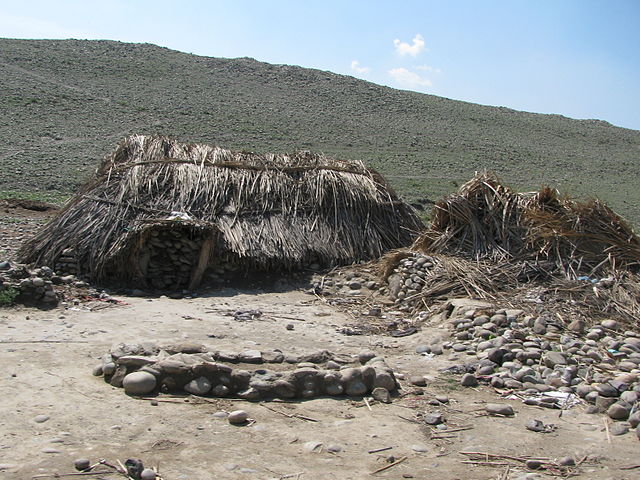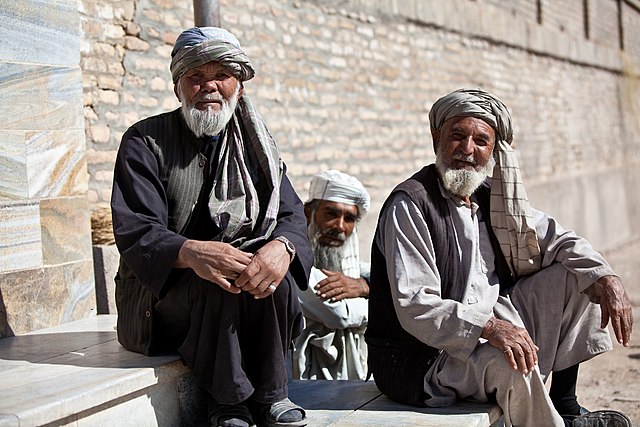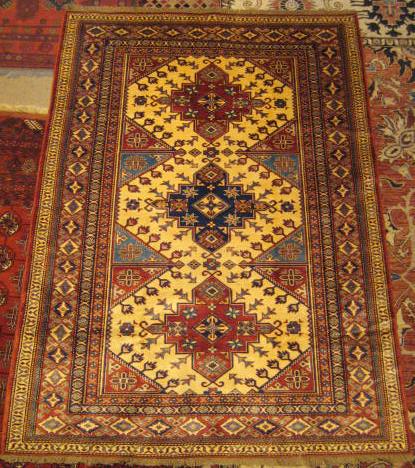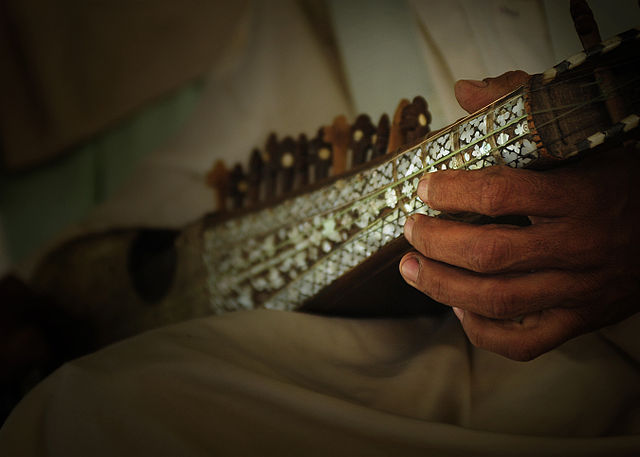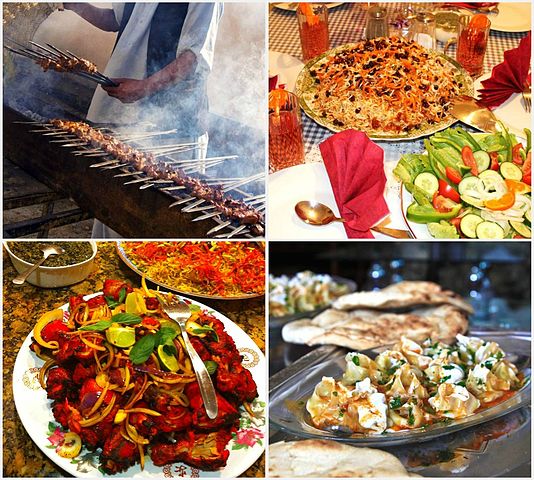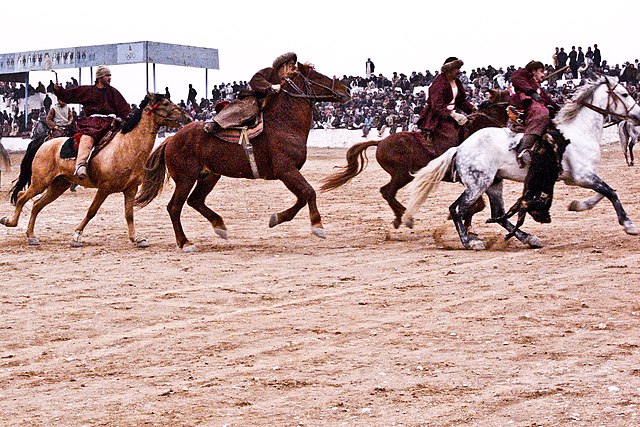
| AFGHANISTAN
Islamic Republic of Afghanistan
Flag
National emblem
Afghanistan, Dari: Afganestan, officially the Islamic Republic of Afghanistan, is a landlocked country at the crossroads of Central and South Asia. Afghanistan is bordered by Pakistan to the east and south; Iran to the west; Turkmenistan, Uzbekistan, and Tajikistan to the north; and China to the northeast. Occupying 652,000 square kilometers (252,000 sq mi), it is a mountainous country with plains in the north and southwest. Kabul is the capital and largest city. The population is around 32 million, composed mostly of ethnic Pashtuns, Tajiks, Hazaras, and Uzbeks.
Humans lived in what is now Afghanistan at least 50,000 years ago. Settled life emerged in the region 9,000 years ago, evolving gradually into the Indus civilization (Shortugai site), the Oxus civilization (Dashlyji site), and the Helmand civilization (Mundigak site) of the 3rd millennium BCE. Indo-Aryans migrated through Bactria-Margiana area to Gandhar, followed by the rise of the Iron Age Yaz I culture (ca. 1500–1100 BCE), which has been closely associated with the culture depicted in the Avesta, the ancient religious texts of Zoroastrianism.
The region, then known as "Ariana", fell to Achaemenid Persians in the 6th century BCE, who conquered the areas to their east as far as the Indus River. Alexander the Great invaded the region in the 4th century BCE, who married Roxana in Bactria before his Kabul Valley campaign, where he faced resistance from Aspasioi and Assakan tribes. The Greco-Bactrian Kingdom became the eastern end of the Hellenistic world. Following the conquest by Mauryan Indians, Buddhism and Hinduism flourished in the region for centuries.
The Kushan emperor Kanishk, who ruled from his twin capitals of Kapisi and Purusapur, played an important role in the spread of Mahayan Buddhism to China and Central Asia. Various other Buddhist and Hindu dynasties also ruled the region, including the Saka, Kidarite, Hephthalite, Alkhon, Nezak, Zunbil, Turk Shahi, and Hindu Shahi.
Muslims brought Islam to Sassanian-held Herat and Zaranj in the mid-7th century, while fuller Islamization was achieved between the 9th and 12th centuries under the Saffarid, Samanid, Ghaznavid, and Ghurid dynasties. Parts of the region were later ruled by the Khwarazmian, Khalji, Timurid, Lodi, Sur, Mughal, and Safavid empires. The political history of the modern state of Afghanistan began with the Hotak dynasty, whose founder Mirwais Hotak declared southern Afghanistan independent in 1709. In 1747, Ahmad Shah Durrani established the Durrani Empire with its capital at Kandahar. In 1776, the Durrani capital was moved to Kabul while Peshawar became the winter capital; the latter was lost to Sikhs in 1823. In the late 19th century, Afghanistan became a buffer state in the "Great Game" between British India and the Russian Empire. In the First Anglo-Afghan War, the British East India Company seized control of Afghanistan briefly, but following the Third Anglo-Afghan War in 1919 the country was free of foreign influence, eventually becoming a monarchy under Amanullah Khan, until almost 50 years later when Zahir Shah was overthrown and a republic was established. In 1978, after a second coup, Afghanistan first became a socialist state and then a Soviet protectorate, evoking the Soviet–Afghan War in the 1980s against mujahideen rebels. By 1996, most of the country was captured by the Islamic fundamentalist Taliban, who ruled as a totalitarian regime for over five years; they were removed from power after the US invasion in 2001 but still control a significant portion of the country. The ongoing war between the government and the Taliban has contributed to the perpetuation of Afghanistan's problematic human rights record including complications of women's rights, with numerous abuses committed by both sides, such as the killing of civilians.
Afghanistan is a unitary presidential Islamic republic. The country has high levels of terrorism, poverty, child malnutrition, and corruption. It is a member of the United Nations, the Organisation of Islamic Cooperation, the South Asian Association for Regional Cooperation, the Group of 77, the Economic Cooperation Organization, and the Non-Aligned Movement. Afghanistan's economy is the world's 96th largest, with a gross domestic product (GDP) of $72.9 billion by purchasing power parity; the country fares much worse in terms of per-capita GDP (PPP), ranking 169th out of 186 countries as of 2018.
Etymology
:
History :
Tents
of Afghan nomads in the northern Badghis province of Afghanistan.
Early peasant farming villages came into existence in Afghanistan
about 7,000 years ago.
The country sits at a unique nexus point where numerous civilizations have interacted and often fought. It has been home to various peoples through the ages, among them the ancient Iranian peoples who established the dominant role of Indo-Iranian languages in the region. At multiple points, the land has been incorporated within vast regional empires, among them the Achaemenid Empire, the Macedonian Empire, the Indian Maurya Empire, and the Islamic Empire. For its success in resisting foreign occupation during the 19th and 20th centuries, Afghanistan has been called the "graveyard of empires," though it is unknown who coined the phrase.
Prehistory
and antiquity :
The extent of the Indus Valley civilization during its mature phase Archaeological exploration done in the 20th century suggests that the geographical area of Afghanistan has been closely connected by culture and trade with its neighbors to the east, west, and north. Artifacts typical of the Paleolithic, Mesolithic, Neolithic, Bronze, and Iron Ages have been found in Afghanistan. Urban civilization is believed to have begun as early as 3000 BCE, and the early city of Mundigak (near Kandahar in the south of the country) was a center of the Helmand culture. More recent findings established that the Indus Valley Civilisation stretched up towards modern-day Afghanistan, making the ancient civilization today part of Pakistan, Afghanistan, and India. In more detail, it extended from what today is northwest Pakistan to northwest India and northeast Afghanistan. An Indus Valley site has been found on the Oxus River at Shortugai in northern Afghanistan. There are several smaller IVC colonies to be found in Afghanistan as well.
After 2000 BCE, successive waves of semi-nomadic people from Central Asia began moving south into Afghanistan; among them were many Indo-European-speaking Indo-Iranians. These tribes later migrated further into South Asia, Western Asia, and toward Europe via the area north of the Caspian Sea. The region at the time was referred to as Ariana.
Zoroastrianism and Hellenic era :
A "Bactrian gold" Scythian belt depicing Dionysus, from Tillya Tepe in the ancient region of Bactria The religion Zoroastrianism is believed by some to have originated in what is now Afghanistan between 1800 and 800 BCE, as its founder Zoroaster is thought to have lived and died in Balkh. Ancient Eastern Iranian languages may have been spoken in the region around the time of the rise of Zoroastrianism. By the middle of the 6th century BCE, the Achaemenids overthrew the Medes and incorporated Arachosia, Aria, and Bactria within its eastern boundaries. An inscription on the tombstone of Darius I of Persia mentions the Kabul Valley in a list of the 29 countries that he had conquered.
Alexander the Great and his Macedonian forces arrived in Afghanistan in 330 BCE after defeating Darius III of Persia a year earlier in the Battle of Gaugamela. Following Alexander's brief occupation, the successor state of the Seleucid Empire controlled the region until 305 BCE when they gave much of it to the Maurya Empire as part of an alliance treaty. The Mauryans controlled the area south of the Hindu Kush until they were overthrown in about 185 BCE. Their decline began 60 years after Ashok's rule ended, leading to the Hellenistic reconquest by the Greco-Bactrians. Much of it soon broke away from them and became part of the Indo-Greek Kingdom. They were defeated and expelled by the Indo-Scythians in the late 2nd century BCE.
Hindu and Buddhist era :
The Silk Road appeared during the first century BCE, and Afghanistan flourished with trade, with routes to China, India, Persia and north to the cities of Bukhara, Samarkand and Khiva in present-day Uzbekistan. Goods and ideas were exchanged at this center point, such as Chinese silk, Persian silver and Roman gold, while the region of present Afghanistan was mining and trading lapis lazuli stones mainly from the Badakhshan region.
During the first century BCE, the Parthian Empire subjugated the region but lost it to their Indo-Parthian vassals. In the mid-to-late first century CE the vast Kushan Empire, centered in Afghanistan, became great patrons of Buddhist culture, making Buddhism flourish throughout the region. The Kushans were overthrown by the Sassanids in the 3rd century CE, though the Indo-Sassanids continued to rule at least parts of the region. They were followed by the Kidarites who, in turn, were replaced by the Hephthalites. They were replaced by the Turk Shahi in the 7th century. The Buddhist Turk Shahi of Kabul was replaced by a Hindu dynasty before the Saffarids conquered the area in 870, this Hindu dynasty was called Hindu Shahi. Much of the northeastern and southern areas of the country remained dominated by Buddhist culture.
Medieval
history :
Saffarid rule at its greatest extent under Ya'qub b. al-Layth al-Saffar Arab Muslims brought Islam to Herat and Zaranj in 642 CE and began spreading eastward; some of the native inhabitants they encountered accepted it while others revolted. Before Islam was introduced, people of the region were mostly Buddhists and Zoroastrians, but there were also Surya and Nana worshipers, Jews, and others. The Zunbils and Kabul Shahi were first conquered in 870 CE by the Saffarid Muslims of Zaranj. Later, the Samanids extended their Islamic influence south of the Hindu Kush. It is reported that Muslims and non-Muslims still lived side by side in Kabul before the Ghaznavids rose to power in the 10th century.
By the 11th century, Mahmud of Ghazni defeated the remaining Hindu rulers and effectively Islamized the wider region, with the exception of Kafiristan. Mahmud made Ghazni into an important city and patronized intellectuals such as the historian Al-Biruni and the poet Ferdowsi. The Ghaznavid dynasty was overthrown by the Ghurids, whose architectural achievements included the remote Minaret of Jam. The Ghurids controlled Afghanistan for less than a century before being conquered by the Khwarazmian dynasty in 1215.
Mongols and Babur :
The Blue Mosque in Mazar-i-Sharif was built in the 15th century In 1219 AD, Genghis Khan and his Mongol army overran the region. His troops are said to have annihilated the Khorasanian cities of Herat and Balkh as well as Bamyan. The destruction caused by the Mongols forced many locals to return to an agrarian rural society. Mongol rule continued with the Ilkhanate in the northwest while the Khalji dynasty administered the Afghan tribal areas south of the Hindu Kush until the invasion of Timur (aka Tamerlane), who established the Timurid Empire in 1370. Under the rule of Shah Rukh the city served as the focal point of the Timurid Renaissance, whose glory matched Florence of the Italian Renaissance as the center of a cultural rebirth.
In the early 16th century, Babur arrived from Ferghana and captured Kabul from the Arghun dynasty. Between the 16th and 18th century, the Uzbek Khanate of Bukhara, Iranian Safavids, and Indian Mughals ruled parts of the territory.
During the Medieval Period, the northwestern area of Afghanistan was referred to by the regional name Khorasan. Two of the four capitals of Khorasan (Herat and Balkh) are now located in Afghanistan, while the regions of Kandahar, Zabulistan, Ghazni, Kabulistan, and Afghanistan formed the frontier between Khorasan and Hindustan. However, up to the 19th century the term Khorasan was commonly used among natives to describe their country, Sir George Elphinstone wrote with amazement that the country known to outsiders as "Afghanistan" was referred to by its own inhabitants as "Khorasan" and that the first Afghan official whom he met at the border welcomed him to Khorasan.
Modern
history :
Portrait of Ahmad Shah Durrani, c. 1757 In 1709, Mirwais Hotak, a local Ghilzai tribal leader, successfully rebelled against the Safavids. He defeated Gurgin Khan and made Afghanistan independent. Mirwais died of natural causes in 1715 and was succeeded by his brother Abdul Aziz, who was soon killed by Mirwais' son Mahmud for treason. Mahmud led the Afghan army in 1722 to the Persian capital of Isfahan, captured the city after the Battle of Gulnabad and proclaimed himself King of Persia. The Afghan dynasty was ousted from Persia by Nader Shah after the 1729 Battle of Damghan.
In 1738, Nader Shah and his forces captured Kandahar, the last Hotak stronghold, from Shah Hussain Hotak, at which point the incarcerated 16-year-old Ahmad Shah Durrani was freed and made the commander of an Afghan regiment. Soon after, the Persian and Afghan forces invaded India. By 1747, the Afghans chose Durrani as their head of state.
Durrani and his Afghan army conquered much of present-day Afghanistan, Pakistan, the Khorasan and Kohistan provinces of Iran, and Delhi in India. He defeated the Indian Maratha Empire, and one of his biggest victories was the 1761 Battle of Panipat.
In October 1772, Durrani died of natural causes and was buried at a site now adjacent to the Shrine of the Cloak in Kandahar. He was succeeded by his son, Timur Shah, who transferred the capital of Afghanistan from Kandahar to Kabul in 1776, with Peshawar becoming the winter capital. After Timur's death in 1793, the Durrani throne passed down to his son Zaman Shah, followed by Mahmud Shah, Shuja Shah and others.
Barakzai dynasty and British wars :
Afghan tribesmen in 1841, painted by British officer James Rattray
British
and allied forces at Kandahar after the 1880 Battle of Kandahar,
during the Second Anglo-Afghan War. The large defensive wall around
the city was removed in the early 1930s by order of King Nadir.
In 1837, during the Battle of Jamrud near the Khyber Pass, Akbar Khan and the Afghan army failed to capture the Jamrud Fort from the Sikh Khalsa Army, but killed Sikh Commander Hari Singh Nalwa, thus ending the Afghan-Sikh Wars. By this time the British were advancing from the east and the first major conflict during "The Great Game" was initiated.
In 1838, the British marched into Afghanistan and arrested Dost Mohammad, sent him into exile in India and replaced him with the previous ruler, Shah Shuja. Following an uprising, the 1842 retreat from Kabul of British-Indian forces and the annihilation of Elphinstone's army, and the Battle of Kabul that led to its recapture, the British placed Dost Mohammad Khan back into power and withdrew their military forces from Afghanistan. In 1878, the Second Anglo-Afghan War was fought over perceived Russian influence, Abdur Rahman Khan replaced Ayub Khan, and Britain gained control of Afghanistan's foreign relations as part of the Treaty of Gandamak of 1879.
In 1893, Mortimer Durand made Amir Abdur Rahman Khan sign a controversial agreement in which the ethnic Pashtun and Baloch territories were divided by the Durand Line. This was a standard divide and rule policy of the British and would lead to strained relations, especially with the later new state of Pakistan.
Shia-dominated Hazarajat and pagan Kafiristan remained politically independent until being conquered by Abdur Rahman Khan in 1891–1896. He was known as the Iron Amir for his features and his ruthless methods against tribes. The Iron Amir viewed railway and telegraph lines coming from the Russian and British empires as "trojan horses" and therefore prevented railway development in Afghanistan. He died in 1901, replaced by his son Habibullah Khan.
During World War I, when Afghanistan was neutral, Habibullah Khan was met by officials of the Central Powers in the Niedermayer–Hentig Expedition, to declare full independence from the United Kingdom, join them and attack British India, as part of the Hindu–German Conspiracy. Their efforts to bring Afghanistan into the Central Powers failed, but it caused discontent among the population for keeping neutrality against the British. Habibullah was assassinated during a hunting trip in 1919, and Amanullah Khan eventually assumed power.
A staunch supporter of the 1915–1916 expeditions, Amanullah Khan evoked the Third Anglo-Afghan War, entering British India via the Khyber Pass.
King Amanullah Khan invaded British India in 1919 and proclaimed Afghanistan's full independence thereafter After the end Third Anglo-Afghan War and the signing of the Treaty of Rawalpindi on 19 August 1919, King Amanullah Khan declared Afghanistan a sovereign and fully independent state. He moved to end his country's traditional isolation by establishing diplomatic relations with the international community, particularly with the Soviet Union and the Weimar Republic of Germany. Following a 1927–28 tour of Europe and Turkey, he introduced several reforms intended to modernize his nation. A key force behind these reforms was Mahmud Tarzi, an ardent supporter of the education of women. He fought for Article 68 of Afghanistan's 1923 constitution, which made elementary education compulsory. The institution of slavery was abolished in 1923. Khan's wife Queen Soraya Tarzi was a figure during this period.
Some of the reforms that were put in place, such as the abolition of the traditional burqa for women and the opening of several co-educational schools, quickly alienated many tribal and religious leaders, and this led to the Afghan Civil War (1928–1929). Faced with the overwhelming armed opposition, Amanullah Khan abdicated in January 1929, and soon after Kabul fell to Saqqawist forces led by Habibullah Kalakani. Prince Mohammed Nadir Shah, Amanullah's cousin, in turn defeated and killed Kalakani in October 1929, and was declared King Nadir Shah. He abandoned the reforms of Amanullah Khan in favor of a more gradual approach to modernization but was assassinated in 1933 by Abdul Khaliq, a fifteen-year-old Hazara student who was an Amanullah loyalist.
Mohammed Zahir Shah, Nadir Shah's 19-year-old son, succeeded to the throne and reigned from 1933 to 1973. The tribal revolts of 1944–1947 saw Zahir Shah's reign being challenged by Zadran, Safi, Mangal, and Wazir tribesmen led by Mazrak Zadran, Salemai, and Mirzali Khan, among others, many of whom were Amanullah loyalists. Close relations with the Muslim states Turkey, the Kingdom of Iraq and Iran/Persia were also pursued, while further international relations were sought by joining the League of Nations in 1934. The 1930s saw the development of roads, infrastructure, the founding of a national bank, and increased education. Road links in the north played a large part in a growing cotton and textile industry. The country built close relationships with the Axis powers, with Germany having the largest share in Afghan development at the time, along with Italy and Japan.
Contemporary history :
Zahir Shah, the last king of Afghanistan, who reigned from 1933 to 1973 Until 1946, Zahir Shah ruled with the assistance of his uncle, who held the post of Prime Minister and continued the policies of Nadir Shah. Another of Zahir Shah's uncles, Shah Mahmud Khan, became Prime Minister in 1946 and began an experiment allowing greater political freedom, but reversed the policy when it went further than he expected. He was replaced in 1953 by Mohammed Daoud Khan, the king's cousin and brother-in-law, and a Pashtun nationalist who sought the creation of a Pashtunistan, leading to highly tense relations with Pakistan. During his ten years at the post until 1963, Daoud Khan pressed for social modernization reforms and sought a closer relationship with the Soviet Union. Afterward, the 1964 constitution was formed, and the first non-royal Prime Minister was sworn in.
King Zahir Shah, like his father Nadir Shah, had a policy of maintaining national independence while pursuing gradual modernization, creating nationalist feeling, and improving relations with the United Kingdom. However, Afghanistan remained neutral and was neither a participant in World War II nor aligned with either power bloc in the Cold War thereafter. However, it was a beneficiary of the latter rivalry as both the Soviet Union and the United States vied for influence by building Afghanistan's main highways, airports, and other vital infrastructure in the post-period. On a per capita basis, Afghanistan received more Soviet development aid than any other country. Afghanistan had, therefore, good relations with both Cold War enemies. In 1973, while the King was in Italy, Daoud Khan launched a bloodless coup and became the first President of Afghanistan, abolishing the monarchy.
Democratic Republic regime and Soviet war :
Hezb-i Islami Khalis fighters in the Sultan Valley of Kunar Province, 1987 In April 1978, the communist People's Democratic Party of Afghanistan (PDPA) seized power in a bloody coup d'état against then-President Mohammed Daoud Khan, in what is called the Saur Revolution. The PDPA declared the establishment of the Democratic Republic of Afghanistan, with its first leader named as People's Democratic Party general secretary Nur Muhammad Taraki. This would trigger a series of events that would dramatically turn Afghanistan from a poor and secluded (albeit peaceful) country to a hotbed of international terrorism. The PDPA initiated various social, symbolic and land distribution reforms that provoked strong opposition, while also brutally oppressing political dissidents. This caused unrest and quickly expanded into a state of civil war by 1979, waged by guerrilla mujahideen (and smaller Maoist guerillas) against regime forces countrywide. It quickly turned into a proxy war as the Pakistani government provided these rebels with covert training centers, the United States supported them through Pakistan's Inter-Services Intelligence (ISI), and the Soviet Union sent thousands of military advisers to support the PDPA regime. Meanwhile, there was increasingly hostile friction between the competing factions of the PDPA – the dominant Khalq and the more moderate Parcham.
In September 1979, PDPA General Secretary Taraki was assassinated in an internal coup orchestrated by fellow Khalq member, then-Prime minister Hafizullah Amin, who assumed the new general secretary of the People's Democratic Party. The situation in the country deteriorated under Amin and thousands of people went missing. Displeased with Amin's government, the Soviet Army invaded the country in December 1979, heading for Kabul and killing Amin just 3 days later. A Soviet-organized regime, led by Parcham's Babrak Karmal but inclusive of both factions (Parcham and Khalq), filled the vacuum. Soviet troops in more substantial numbers were deployed to stabilize Afghanistan under Karmal, marking the beginning of the Soviet–Afghan War. The United States and Pakistan, along with smaller actors like Saudi Arabia and China, continued supporting the rebels, delivering billions of dollars in cash and weapons including two thousand FIM-92 Stinger surface-to-air missiles. Lasting nine years, the war caused the deaths of between 562,000 and 2 million Afghans, and displaced about 6 million people who subsequently fled Afghanistan, mainly to Pakistan and Iran. Heavy air bombardment destroyed many countryside villages, millions of landmines were planted, and some cities such as Herat and Kandahar were also damaged from bombardment. Pakistan's North-West Frontier Province functioned as an organisational and networking base for the anti-Soviet Afghan resistance, with the province's influential Deobandi ulama playing a major supporting role in promoting the 'jihad'. After the Soviet withdrawal, the civil war ensued until the communist regime under People's Democratic Party leader Mohammad Najibullah collapsed in 1992.
Post-Cold War conflict and Taliban regime :
Another civil war broke out after the creation of a dysfunctional coalition government between leaders of various mujahideen factions. Amid a state of anarchy and factional infighting, various mujahideen factions committed widespread rape, murder and extortion, while Kabul was heavily bombarded and partially destroyed by the fighting. Several failed reconciliations and alliances occurred between different leaders. The Taliban emerged in September 1994 as a movement and militia of students (talib) from Islamic madrassas (schools) in Pakistan, who soon had military support from Pakistan. Taking control of Kandahar city that year, they conquered more territories until finally driving out the government of Rabbani from Kabul in 1996, where they established an emirate that gained international recognition from only three countries. The Taliban were condemned internationally for the harsh enforcement of their interpretation of Islamic sharia law, which resulted in the brutal treatment of many Afghans, especially women. During their rule, the Taliban and their allies committed massacres against Afghan civilians, denied UN food supplies to starving civilians and conducted a policy of scorched earth, burning vast areas of fertile land and destroying tens of thousands of homes.
After the fall of Kabul to the Taliban, Ahmad Shah Massoud and Abdul Rashid Dostum formed the Northern Alliance, later joined by others, to resist the Taliban. Dostum's forces were defeated by the Taliban during the Battles of Mazar-i-Sharif (1997–98); Pakistan's Chief of Army Staff, Pervez Musharraf, began sending thousands of Pakistanis to help the Taliban defeat the Northern Alliance. By 2000 the Northern Alliance only controlled 10% of territory, cornered in the north-east. On 9 September 2001, Massoud was assassinated by two Arab suicide attackers in Panjshir Valley. Around 400,000 Afghans died in internal conflicts between 1990 and 2001.
In October 2001, the United States invaded Afghanistan to remove the Taliban from power after they refused to hand over Osama Bin Laden, the prime suspect of the September 11 attacks, who was a "guest" of the Taliban and was operating his al-Qaeda network in Afghanistan. The majority of Afghans supported the American invasion of their country. During the initial invasion, US and UK forces bombed al-Qaeda training camps, and later working with the Northern Alliance, the Taliban regime came to an end.
Post-2001 :
U.S. troops and Air Force choppers in Afghanistan, 2008 In December 2001, after the Taliban government was overthrown, the Afghan Interim Administration under Hamid Karzai was formed. The International Security Assistance Force (ISAF) was established by the UN Security Council to help assist the Karzai administration and provide basic security. By this time, after two decades of war as well as an acute famine at the time, Afghanistan had one of the highest infant and child mortality rates in the world, the lowest life expectancy, much of the population were hungry, and infrastructure was in ruins. Many foreign donors started providing aid and assistance to rebuild the war-torn country.
Taliban forces meanwhile began regrouping inside Pakistan, while more coalition troops entered Afghanistan to help the rebuilding process. The Taliban began an insurgency to regain control of Afghanistan. Over the next decade, ISAF and Afghan troops led many offensives against the Taliban, but failed to fully defeat them. Afghanistan remains one of the poorest countries in the world due to a lack of foreign investment, government corruption, and the Taliban insurgency. Meanwhile, Karzai attempted to unite the peoples of the country, and the Afghan government was able to build some democratic structures, adopting a constitution in 2004 with the name Islamic Republic of Afghanistan. Attempts were made, often with the support of foreign donor countries, to improve the country's economy, healthcare, education, transport, and agriculture. ISAF forces also began to train the Afghan National Security Forces. Following 2002, nearly five million Afghans were repatriated. The number of NATO troops present in Afghanistan peaked at 140,000 in 2011, dropping to about 16,000 in 2018.
In September 2014 Ashraf Ghani became president after the 2014 presidential election where for the first time in Afghanistan's history power was democratically transferred. On 28 December 2014, NATO formally ended ISAF combat operations in Afghanistan and transferred full security responsibility to the Afghan government. The NATO-led Operation Resolute Support was formed the same day as a successor to ISAF. Thousands of NATO troops remained in the country to train and advise Afghan government forces and continue their fight against the Taliban. It was estimated in 2015 that "about 147,000 people have been killed in the Afghanistan war since 2001. More than 38,000 of those killed have been civilians". A report titled Body Count concluded that 106,000–170,000 civilians have been killed as a result of the fighting in Afghanistan at the hands of all parties to the conflict.
Geography :
Afghanistan is located in South Asia and Central Asia - indeed the
region particularly centered at Afghanistan is considered the "crossroads
of Asia", and the country has had the nickname Heart of Asia.
The renowned Urdu poet Muhammad Allama Iqbal once wrote about the
country:
At over 652,230 km2 (251,830 sq mi), Afghanistan is the world's 41st largest country, slightly bigger than France and smaller than Myanmar, and about the size of Texas in the United States. There is no coastline, as Afghanistan is landlocked. It shares borders with Pakistan in the south and east (including Indian-claimed Gilgit-Baltistan); Iran in the west; Turkmenistan, Uzbekistan, and Tajikistan in the north; and China in the far east.
The geography in Afghanistan is varied, but is mostly mountainous and rugged, with some unusual mountain ridges accompanied by plateaus and river basins. It is dominated by the Hindu Kush range, the western extension of the Himalayas that stretches to eastern Tibet via the Pamir Mountains and Karakoram Mountains in Afghanistan's far north-east. Most of the highest points are in the east consisting of fertile mountain valleys. The Hindu Kush ends at the west-central highlands, creating plains in the north and southwest, namely the Turkestan Plains and the Sistan Basin; these two regions consist of rolling grasslands and semi-deserts, and hot windy deserts, respectively. Forests exist in the corridor between Nuristan and Paktika provinces, and tundra in the north-east. The country's highest point is Noshaq, at 7,492 m (24,580 ft) above sea level. The lowest point lies in Jowzjan Province along the Amu River bank, at 258 m (846 ft) above sea level.
Kunduz River valley Despite having numerous rivers and reservoirs, large parts of the country are dry. The endorheic Sistan Basin is one of the driest regions in the world. The Amu Darya rises at the north of the Hindu Kush, while the nearby Hari Rud flows west towards Herat, and the Arghandab River from the central region southwards. To the south and west of the Hindu Kush flow a number of streams that are tributaries of the Indus River, such as the Helmand River. One exception is the Kabul River which flows in an easternly direction to the Indus ending at the Indian Ocean. Afghanistan receives heavy snow during the winter in the Hindu Kush and Pamir Mountains, and the melting snow in the spring season enters the rivers, lakes, and streams. However, two-thirds of the country's water flows into the neighboring countries of Iran, Pakistan, and Turkmenistan. As reported in 2010, the state needs more than US$2 billion to rehabilitate its irrigation systems so that the water is properly managed.
The northeastern Hindu Kush mountain range, in and around the Badakhshan Province of Afghanistan, is in a geologically active area where earthquakes may occur almost every year. They can be deadly and destructive, causing landslides in some parts or avalanches during the winter. The last strong earthquakes were in 1998, which killed about 6,000 people in Badakhshan near Tajikistan. This was followed by the 2002 Hindu Kush earthquakes in which over 150 people were killed and over 1,000 injured. A 2010 earthquake left 11 Afghans dead, over 70 injured, and more than 2,000 houses destroyed.
Climate :
Köppen climate map of Afghanistan Afghanistan has a continental climate with harsh winters in the central highlands, the glaciated northeast (around Nuristan), and the Wakhan Corridor, where the average temperature in January is below -15 °C (5 °F) and can reach -26 °C (-15 °F), and hot summers in the low-lying areas of the Sistan Basin of the southwest, the Jalalabad basin in the east, and the Turkestan plains along the Amu River in the north, where temperatures average over 35 °C (95 °F) in July and can go over 43 °C (109 °F). The country is generally arid in the summers, with most rainfall falling between December and April. The lower areas of northern and western Afghanistan are the driest, with precipitation more common in the east. Although proximate to India, Afghanistan is mostly outside the monsoon zone, apart from Nuristan Province which occasionally receives summer monsoon rain.
Biodiversity :
Snow leopard
Ibex
Pistachio tree
Locoweed Several types of mammals exist throughout Afghanistan. Snow leopards, Siberian tigers and brown bears live in the high elevation alpine tundra regions. The Marco Polo sheep exclusively live in the Wakhan Corridor region of north-east Afghanistan. Foxes, wolves, otters, deer, wild sheep, lynx and other big cats populate the mountain forest region of the east. In the semi-desert northern plains, wildlife include a variety of birds, hedgehogs, gophers, and large carnivores such as jackals and hyenas.
Gazelles, wild pigs and jackals populate the steppe plains of the south and west, while mongoose and cheetahs exist in the semi-desert south. Marmots and ibex also live in the high mountains of Afghanistan, and pheasants exist in some parts of the country. The Afghan hound is a native breed of dog known for its fast speed and its long hair; it is relatively known in the west.
Endemic fauna of Afghanistan includes the Afghan flying squirrel, Afghan snowfinch, Afghanodon (or the "Paghman mountain salamander"), Stigmella kasyi, Vulcaniella kabulensis, Afghan leopard gecko, Wheeleria parviflorellus, amongst others. Endemic flora include Iris afghanica. Afghanistan has a wide variety of birds despite its relatively arid climate – an estimated 460 species of which 235 breed within.
The forest region of Afghanistan has vegetation such as pine trees, spruce trees, fir trees and larches, whereas the steppe grassland regions consist of broadleaf trees, short grass, perennial plants and shrublands. The colder high elevation regions are composed of hardy grasses and small flowering plants. Several regions are designated protected areas; there are three National Parks: Band-e Amir, Wakhan and Nuristan.
Demographics
:
The current population growth rate is 2.37%, one of the highest in the world outside of Africa. This population is expected to reach 82 million by 2050 if current population trends continue. The population of Afghanistan increased steadily until the 1980s, when civil war caused millions to flee to other countries such as Pakistan. Millions have since returned and the war conditions has meant a high fertility rate compared to global and regional trends. Afghanistan's healthcare has recovered since the turn of the century, causing falls in infant mortality and increases in life expectancy. This (along with other factors such as returning refugees) caused rapid population growth in the 2000s that has only recently started to slow down.
Ethnic
groups :
Languages
:
There are a number of smaller regional languages, including Uzbek, Turkmen, Balochi, Pashayi, and Nuristani.
When it comes to foreign languages among the populace, many are able to speak or understand Hindustani (Urdu-Hindi), partly due to returning Afghan refugees from Pakistan and the popularity of Bollywood films respectively. English is also understood by some of the population, and has been gaining popularity as of the 2000s. Some Afghans retain some ability of Russian, which was taught to public schools during the 1980s.
Religion
:
Thousands of Afghan Sikhs and Hindus are also found in certain major cities (namely Kabul, Jalalabad, Ghazni, Kandahar) accompanied by gurdwaras and mandirs. There was a small Jewish community in Afghanistan who had emigrated to Israel and the United States by the end of the twentieth century; at least one Jew, Zablon Simintov, remains, who is the caretaker of the only remaining synagogue. Afghan Christians, who number 500–8,000, practice their faith secretly due to intense societal opposition, and there are no public churches.
Urbanisation
:
The only city with over a million residents is its capital, Kabul, located in the east of the country. The other large cities are located generally in the "ring" around the Central Highlands, namely Kandahar in the south, Herat in the west, Mazar-i-Sharif and Kunduz in the north, and Jalalabad in the east.
Kandahar
Herat
Governance :
Afghanistan is an Islamic republic consisting of three branches, the executive, legislative, and judicial. The nation is led by President Ashraf Ghani with Amrullah Saleh and Sarwar Danish as vice presidents. The National Assembly is the legislature, a bicameral body having two chambers, the House of the People and the House of Elders. The Supreme Court is led by Chief Justice Said Yusuf Halem, the former Deputy Minister of Justice for Legal Affairs.
According to Transparency International, Afghanistan remains in the top most corrupt countries list. A January 2010 report published by the United Nations Office on Drugs and Crime revealed that bribery consumed an amount equal to 23% of the GDP of the nation.
On 17 May 2020, President Ashraf Ghani reached a power-sharing deal with his rival from presidential elections, Abdullah Abdullah, deciding on who would manage the respected key ministries. The agreement ended months-long political deadlock in the country. It was agreed that while Ghani will lead Afghanistan as the president, Abdullah will oversee the peace process with the Taliban.
Elections and parties :
U.S. President Donald Trump with president of Afghanistan Ashraf Ghani in 2017 One instrument of Afghan governance is the loya jirga (grand assembly), a Pashtun consultative meeting that is mainly organized for choosing a new head of state, adopting a new constitution, or to settle national or regional issue such as war. Loya jirgas have been held since at least 1747, with the most recent one occurring in 2013.
Under the 2004 constitution, both presidential and parliamentary elections are to be held every five years. However, due to the disputed 2014 presidential election, the scheduled 2015 parliamentary elections were delayed until 2018. Presidential elections use the two-round system; if no candidate receives a majority of the vote in the first round, a second round will be held featuring the top two candidates. Parliamentary elections have only one round and are based on the single non-transferable vote system, which allows some candidates to be elected with as little as one percent of the vote.
The 2004 Afghan presidential election was relatively peaceful, in which Hamid Karzai won in the first round with 55.4% of the votes. However, the 2009 presidential election was characterized by lack of security, low voter turnout, and widespread electoral fraud, ending in Karzai's reelection. The 2014 presidential election ended with Ashraf Ghani winning by 56.44% of the votes.
The National Assembly of Afghanistan in Kabul, the current site was built in 2015 Political parties played a marginal role in post-2001 Afghan politics, in part due to Karzai's opposition to them. In the 2005 parliamentary election, the ballots did not show candidates' party affiliation, so the results were dictated by the personal prestige of the candidates. Among the elected officials were a large mix of former mujahideen, Islamic fundamentalists, warlords, tribal nationalists, former communists, reformists, urban professionals, royalists and several former Taliban associates. In the same period, Afghanistan became the 30th highest nation in terms of female representation in the National Assembly. Parties became more influential after 2009, when a new law established more stringent requirements for party registration. Nearly a hundred new parties were registered after the law came into effect, and party activity increased in the 2014 elections, but party influence remained limited.
Administrative
divisions :
The provincial governors are appointed by the President of Afghanistan, and the district governors are selected by the provincial governors. The provincial governors are representatives of the central government in Kabul and are responsible for all administrative and formal issues within their provinces. There are also provincial councils that are elected through direct and general elections for four years. The functions of provincial councils are to take part in provincial development planning and to participate in the monitoring and appraisal of other provincial governance institutions.
According to article 140 of the constitution and the presidential decree on electoral law, mayors of cities should be elected through free and direct elections for a four-year term. In practice however, mayors are appointed by the government.
The following is a list of all the 34 provinces in alphabetical order :
Afghanistan is divided into 34 provinces, which are further divided into a number of districts
1. Badakhshan
The United Nations Assistance Mission in Afghanistan (UNAMA) was established in 2002 to help the country recover from decades of war. Today, several NATO member states deploy about 17,000 troops in Afghanistan as part of the Resolute Support Mission. Its main purpose is to train the Afghan National Security Forces.
Military :
Black
Hawks of the Afghan Air Force at Kandahar Airfield. As a major non-NATO
ally, the Afghan Armed Forces receive most of their equipment and
training from the United States.
Law enforcement :
Law enforcement in Afghanistan is the responsibility of the Afghan National Police (ANP), which is part of the Ministry of Interior Affairs. The ANP consists of two primary branches, the Afghan Uniformed Police and the Afghan Border Police. The mission of the Uniformed Police is to ensure security within Afghanistan, prevent crime, and protect property. The Border Police is responsible for securing and maintaining the nation's borders with neighboring states as well as all international airports within the country. Afghanistan's intelligence agency, the National Directorate of Security (NDS), assists the ANP with security matters.
All parts of Afghanistan are considered dangerous due to militant activities and terrorism-related incidents. Kidnapping for ransom and robberies are common in major cities. Every year hundreds of Afghan police are killed in the line of duty. Afghanistan is also the world's leading producer of opium. Afghanistan's opium poppy harvest produces more than 90% of illicit heroin globally, and more than 95% of the European supply. The Afghan Ministry of Counter Narcotics is responsible for the monitoring and eradication of the illegal drug business.
Human
rights :
According to Global Rights, almost 90% of women in Afghanistan have experienced physical abuse, sexual abuse, psychological abuse or forced marriage. The perpetrators of these crimes are the families of the victim. A 2009 proposal for a law against the violence of women could only be passed through a presidential decree. In 2012, Afghanistan recorded 240 cases of honor killing, but the total number is believed to be much higher. Of the reported honor killings, 21% were committed by the victims' husbands, 7% by their brothers, 4% by their fathers, and the rest by other relatives.
Homosexuality is taboo in Afghan society; according to the Penal Code, homosexual intimacy is punished by up to a year in prison. With implementing Sharia law offenders can face death. However an ancient tradition involving male homosexual acts between youngsters and older men (typically wealthy or elite people) called bacha bazi persists. This act is also illegal under the Penal Code and offenders can be imprisoned.
On August 14, 2020, UN Human Rights Council experts issued a joint statement urging Afghanistan officials to prevent the killings of human rights defenders as there have been nine deaths of human rights defenders since January 2020.
Economy :
Afghanistan's nominal GDP was $21.7 billion in 2018, or $72.9 billion by purchasing power parity (PPP). Its GDP per capita is $2,024 (PPP). Despite having $1 trillion or more in mineral deposits, it remains one of the world's least developed countries. Afghanistan's rough physical geography and its landlocked status has been cited as reasons why the country has always been among the least developed in the modern era – a factor where progress is also slowed by contemporary conflict and political instability. The country imports over $7 billion worth of goods but exports only $784 million, mainly fruits and nuts. It has $2.8 billion in external debt. The service sector contributed the most to the GDP (55.9%) followed by agriculture (23%) and industry (21.1%).
Afghan women at a textile factory in Kabul While the nation's current account deficit is largely financed with donor money, only a small portion is provided directly to the government budget. The rest is provided to non-budgetary expenditure and donor-designated projects through the United Nations system and non-governmental organizations.
Da Afghanistan Bank serves as the central bank of the nation and the "Afghani" (AFN) is the national currency, with an exchange rate of about 75 Afghanis to 1 US dollar. A number of local and foreign banks operate in the country, including the Afghanistan International Bank, New Kabul Bank, Azizi Bank, Pashtany Bank, Standard Chartered Bank, and the First Micro Finance Bank.
Afghan rugs are one of Afghanistan's main exports One of the main drivers for the current economic recovery is the return of over 5 million expatriates, who brought with them entrepreneurship and wealth-creating skills as well as much needed funds to start up businesses. Many Afghans are now involved in construction, which is one of the largest industries in the country. Some of the major national construction projects include the $35 billion New Kabul City next to the capital, the Aino Mena project in Kandahar, and the Ghazi Amanullah Khan Town near Jalalabad. Similar development projects have also begun in Herat, Mazar-e-Sharif, and other cities. An estimated 400,000 people enter the labor market each year.
Several small companies and factories began operating in different parts of the country, which not only provide revenues to the government but also create new jobs. Improvements to the business environment have resulted in more than $1.5 billion in telecom investment and created more than 100,000 jobs since 2003. Afghan rugs are becoming popular again, allowing many carpet dealers around the country to hire more workers; in 2016–17 it was the fourth most exported group of items.
Afghanistan is a member of WTO, SAARC, ECO, and OIC. It holds an observer status in SCO. In 2018, a majority of imports come from either Iran, China, Pakistan and Kazakhstan, while 84% of exports are to Pakistan and India.
Agriculture :
Agriculture is a dominant economic sector Agricultural production is the backbone of Afghanistan's economy and has traditionally dominated the economy, employing about 40% of the workforce as of 2018. The country is known for producing pomegranates, grapes, apricots, melons, and several other fresh and dry fruits. It is also known as the world's largest producer of opium – as much as 16% or more of the nation's economy is derived from the cultivation and sale of opium. It is also one of the world's top producers of cannabis.
Afghan saffron has been recognized as the world's best Saffron, the most expensive spice, grows in Afghanistan, particularly Herat Province. In recent years, there has been an uptick in saffron production, which authorities and farmers are trying to replace poppy cultivation. Between 2012 and 2019, the saffron cultivated and produced in Afghanistan was consecutively ranked the world's best by the International Taste and Quality Institute. Production hit record high in 2019 (19,469 kg of saffron), and one kilogram is sold domestically between $634 and $1147.
Mining :
The country's natural resources include: coal, copper, iron ore, lithium, uranium, rare earth elements, chromite, gold, zinc, talc, barite, sulfur, lead, marble, precious and semi-precious stones, natural gas, and petroleum, among other things. In 2010, US and Afghan government officials estimated that untapped mineral deposits located in 2007 by the US Geological Survey are worth at least $1 trillion.
Michael E. O'Hanlon of the Brookings Institution estimated that if Afghanistan generates about $10 billion per year from its mineral deposits, its gross national product would double and provide long-term funding for Afghan security forces and other critical needs. The United States Geological Survey (USGS) estimated in 2006 that northern Afghanistan has an average 460 million m3 (2.9 billion bbl) of crude oil, 440 billion m3 (15.7 trillion cu ft) of natural gas, and 67 billion L (562 million US bbl) of natural gas liquids. In 2011, Afghanistan signed an oil exploration contract with China National Petroleum Corporation (CNPC) for the development of three oil fields along the Amu Darya river in the north.
The country has significant amounts of lithium, copper, gold, coal, iron ore, and other minerals. The Khanashin carbonatite in Helmand Province contains 1,000,000 tonnes (980,000 long tons; 1,100,000 short tons) of rare earth elements. In 2007, a 30-year lease was granted for the Aynak copper mine to the China Metallurgical Group for $3 billion, making it the biggest foreign investment and private business venture in Afghanistan's history.The state-run Steel Authority of India won the mining rights to develop the huge Hajigak iron ore deposit in central Afghanistan. Government officials estimate that 30% of the country's untapped mineral deposits are worth at least $1 trillion. One official asserted that "this will become the backbone of the Afghan economy" and a Pentagon memo stated that Afghanistan could become the "Saudi Arabia of lithium". In a 2011 news story, the CSM reported, "The United States and other Western nations that have borne the brunt of the cost of the Afghan war have been conspicuously absent from the bidding process on Afghanistan's mineral deposits, leaving it mostly to regional powers."
Access to biocapacity in Afghanistan is lower than world average. In 2016, Afghanistan had 0.43 global hectares of biocapacity per person within its territory, much less than the world average of 1.6 global hectares per person. In 2016 Afghanistan used 0.73 global hectares of biocapacity per person - their ecological footprint of consumption. This means they use just under double as much biocapacity as Afghanistan contains. As a result, Afghanistan is running a biocapacity deficit.
Infrastructure
:
The Kajaki Dam in Helmand Province produces over 52 megawatts of electricity According to the World Bank, 98% of the rural population have access to electricity in 2018, up from 28% in 2008. Overall the figure stands at 98.7%. As of 2016, Afghanistan produces 1,400 megawatts of power, but still imports the majority of electricity via transmission lines from Iran and the Central Asian states. The majority of electricity production is via hydropower, helped by the amount of rivers and streams that flow from the mountains. However electricity is not always reliable and blackouts happen, including in Kabul. In recent years an increasing number of solar, biomass and wind power plants have been constructed. Currently under development are the CASA-1000 project which will transmit electricity from Kyrgyzstan and Tajikistan, and the Turkmenistan-Afghanistan-Pakistan-India (TAPI) gas pipeline. Power is managed by the Da Afghanistan Breshna Sherkat (DABS, Afghanistan Electricity Company).
Important dams include the Kajaki Dam, Dahla Dam, and the Sardeh Band Dam.
Tourism :
Tourism is a small industry in Afghanistan due to security issues. Nevertheless, some 20,000 foreign tourists visit the country annually as of 2016. In particular an important region for domestic and international tourism is the picturesque Bamyan Valley, which includes lakes, canyons and historical sites, helped by the fact it is in a safe area away from insurgent activity. Smaller numbers visit and trek in regions such as the Wakhan Valley, which is also one of the world's most remote communities. From the late 1960s onwards, Afghanistan was a popular stop on the famous Hippie trail, attracting many Europeans and Americans. Coming from Iran, the trail traveled through various Afghan provinces and cities including Herat, Kandahar and Kabul before crossing to northern Pakistan, northern India, and Nepal. Tourism peaked in 1977, the year before the start of political instability and armed conflict.
The Minaret of Jam is a UNESCO World Heritage Site, currently under threat by erosion and flooding The city of Ghazni has significant history and historical sites, and together with Bamyan city have in recent years been voted Islamic Cultural Capital and South Asia Cultural Capital respectively. The cities of Herat, Kandahar, Balkh, and Zaranj are also very historic. The Minaret of Jam in the Hari River valley is a UNESCO World Heritage site. A cloak reputedly worn by Islam's prophet Muhammad is kept inside the Shrine of the Cloak in Kandahar, a city founded by Alexander and the first capital of Afghanistan. The citadel of Alexander in the western city of Herat has been renovated in recent years and is a popular attraction. In the north of the country is the Shrine of Ali, believed by many to be the location where Ali was buried. The National Museum of Afghanistan is located in Kabul and hosts a large number of Buddhist, Bactrian Greek and early Islamic antiquities; the museum suffered greatly by civil war but has been slowly restoring since the early 2000s.
Communication
:
Transportation :
Due to Afghanistan's geography, transport between various parts of the country have historically been difficult. The backbone of Afghanistan's road network is Highway 1, often called the "Ring Road", which extends for 2,210 kilometers (1,370 mi) and connects five major cities: Kabul, Ghazni, Kandahar, Herat and Mazar-i-Sharif, with spurs to Kunduz and Jalalabad and various border crossings, while skirting around the mountains of the Hindu Kush.
The Ring Road is crucially important for domestic and international trade and the economy. A key portion of the Ring Road is the Salang Tunnel, completed in 1964, which facilitates travel through the Hindu Kush mountain range and connects northern and southern Afghanistan. It is the only land route that connects Central Asia to the Indian subcontinent. Several mountain passes allow travel between the Hindu Kush in other areas. Serious traffic accidents are common on Afghan roads and highways, particularly on the Kabul–Kandahar and the Kabul–Jalalabad Road. Traveling by bus in Afghanistan remains dangerous due to militant activities.
An Ariana Afghan Airlines Airbus A310 in 2006 Air transport in Afghanistan is provided by the national carrier, Ariana Afghan Airlines, and by the private company Kam Air. Airlines from a number of countries also provide flights in and out of the country. These include Air India, Emirates, Gulf Air, Iran Aseman Airlines, Pakistan International Airlines, and Turkish Airlines. The country has four international airports: Hamid Karzai International Airport (formerly Kabul International Airport), Kandahar International Airport, Herat International Airport, and Mazar-e Sharif International Airport. Including domestic airports, there are 43. Bagram Air Base is a major military airfield.
The country has three rail links: one, a 75-kilometer (47 mi) line from Mazar-i-Sharif to the Uzbekistan border; a 10-kilometer (6.2 mi) long line from Toraghundi to the Turkmenistan border (where it continues as part of Turkmen Railways); and a short link from Aqina across the Turkmen border to Kerki, which is planned to be extended further across Afghanistan. These lines are used for freight only and there is no passenger service. A rail line between Khaf, Iran and Herat, western Afghanistan, intended for both freight and passengers, is under construction as of 2019. About 125 kilometers (78 mi) of the line will lie on the Afghan side. There are various proposals for the construction of additional rail lines in the country.
Private vehicle ownership has increased substantially since the early 2000s. Taxis are yellow in color and consist of both cars and auto rickshaws. In rural Afghanistan, villagers often use donkeys, mules or horses to transport or carry goods. Camels are primarily used by the Kochi nomads. Bicycles are popular throughout Afghanistan.
Education :
School children in Ghazni Province – the number of children attending school at primary level has increased from 5% in 2000 to 57% in 2018 Education in Afghanistan includes K–12 and higher education, which is overseen by the Ministry of Education and the Ministry of Higher Education. There are over 16,000 schools in the country and roughly 9 million students. Of this, about 60% are males and 40% females. Over 174,000 students are enrolled in different universities around the country. About 21% of these are females. Former Education Minister Ghulam Farooq Wardak had stated that construction of 8,000 schools is required for the remaining children who are deprived of formal learning.
The top universities in Afghanistan are the American University of Afghanistan (AUAF) followed by Kabul University (KU), both of which are located in Kabul. The National Military Academy of Afghanistan, modeled after the United States Military Academy at West Point, is a four-year military development institution dedicated to graduating officers for the Afghan Armed Forces. The Afghan Defense University was constructed near Qargha in Kabul. Major universities outside of Kabul include Kandahar University in the south, Herat University in the northwest, Balkh University and Kunduz University in the north, Nangarhar University and Khost University in the east. The United States is building six faculties of education and five provincial teacher training colleges around the country, two large secondary schools in Kabul, and one school in Jalalabad. Kabul University was founded in 1932 and is a respected institute that played a significant part in the country's education; from the 1960s the Kabul University was also a hotbed of radical political ideologies such as Marxism and Islamism, which played major parts in society, politics and the war that began in 1978.
As of 2018 the literacy rate of the population age 15 and older is 43.02% (males 55.48% and females 29.81%). The Afghan National Security Forces are provided with mandatory literacy courses.
Health
:
There are over 100 hospitals in Afghanistan, with the most advanced treatments being available in Kabul. The French Medical Institute for Children and Indira Gandhi Children's Hospital in Kabul are the leading children's hospitals in the country. Some of the other leading hospitals in Kabul include the Jamhuriat Hospital and Jinnah Hospital. In spite of all this, many Afghans travel to Pakistan and India for advanced treatment.
It was reported in 2006 that nearly 60% of the Afghan population lives within a two-hour walk of the nearest health facility. Disability rate is also high in Afghanistan due to the decades of war. It was reported recently that about 80,000 people are missing limbs. Non-governmental charities such as Save the Children and Mahboba's Promise assist orphans in association with governmental structures. Demographic and Health Surveys is working with the Indian Institute of Health Management Research and others to conduct a survey in Afghanistan focusing on maternal death, among other things.
Culture :
Afghanistan is a predominantly tribal society, with different regions of the country having their own cultures as a result of differing ethnicities and geographic obstacles that makes much of the country remote. Family is the mainstay of Afghan society and families are often headed by a patriarch. In the southern and eastern region, the people live according to the Pashtun culture by following Pashtunwali (the Pashtun way). Key tenets of Pashtunwali include hospitality, the provision of sanctuary to those seeking refuge, and revenge for the shedding of blood. The Pashtuns (and Baloch) are largely connected to the culture of South Asia. The remaining Afghans are culturally Persian and Turkic. Some non-Pashtuns who live in proximity with Pashtuns have adopted Pashtunwali in a process called Pashtunization, while some Pashtuns have been Persianized. Those who have lived in Pakistan and Iran over the last 30 years have been further influenced by the cultures of those neighboring nations. The Afghan people are known to be strongly religious.
Afghans, particularly Pashtuns, are noted for their tribal solidarity and high regard for personal honor. One writer considers the tribal system to be the best way of organizing large groups of people in a country that is geographically difficult, and in a society that, from a materialistic point of view, has an uncomplicated lifestyle. There are various Afghan tribes, and an estimated 2–3 million nomads. Afghan culture is deeply Islamic, but pre-Islamic practices persist. One example is bacha bazi, a term for activities involving sexual relations between older men and younger adolescent men, or boys. Child marriage is prevalent in Afghanistan; the legal age for marriage is 16. The most preferred marriage in Afghan society is to one's parallel cousin, and the groom is often expected to pay a bride price.
A house occupied by nomadic kochi people in Nangarhar Province In the villages, families typically occupy mudbrick houses, or compounds with mudbrick or stone walled houses. Villages typically have a headman (malik), a master for water disribution (mirab) and a religious teacher (mullah). Men would typically work on the fields, joined by women during harvest. About 15% of the population are nomadic, locally called kochis. When nomads pass villages they often buy supplies such as tea, wheat and kerosene from the villagers; villagers buy wool and milk from the nomads.
Old men in Herat wearing perahan tunban with a turban (lungi) Afghan clothing for both men and women typically consists of various forms of shalwar kameez, especially perahan tunban and khet partug. Women would normally wear a chador for head covering; some women, typically from highly conservative communities, wear the burqa, a full body covering. These were worn by some women of the Pashtun community well before Islam came to the region, but the Taliban enforced this dress on women when they were in power. Another popular dress is the chapan which acts as a coat. The karakul is a hat made from the fur of a specific regional breed of sheep. It was favored by former kings of Afghanistan and became known to much of the world in the 21st century when it was constantly worn by President Hamid Karzai. The pakol is another traditional hat originating from the far east of the country; it was popularly worn by the guerilla leader Ahmad Shah Massoud. The Mazari hat originates from northern Afghanistan.
Architecture
:
Art and ceramics :
Carpet weaving is an ancient practice in Afghanistan, and many of these are still handmade by tribal and nomadic people today. Carpets have been produced in the region for thousands of years and traditionally done by women. Some crafters express their feelings through the designs of rugs; for example after the outbreak of the Soviet-Afghan War, "war rugs" were created with designs representing pain and misery caused by the conflict. Every province has its own specific characteristics in making rugs. In some of the Turkic-populated areas in the north-west, bride and wedding ceremony prices are driven by the bride's weaving skills.
Pottery has been crafted in Afghanistan for millennia. The village of Istalif, north of Kabul, is in particular a major center, known for its unique turquoise and green pottery, and their methods of crafting have remained the same for centuries. Much of lapis lazuli stones were earthed in modern-day Afghanistan which were used in Chinese porcelain as cobalt blue, later used in ancient Mesopotamia and Turkey.
The lands of Afghanistan have a long history of art, with the world's earliest known usage of oil painting found in cave murals in the country. A notable art style that developed in Afghanistan and eastern Pakistan is Gandhar Art, produced by a fusion of Greco-Roman art and Buddhist art between the 1st and 7th centuries CE. Later eras saw increased use of the Persian miniature style, with Kamaleddin Behzad of Herat being one of the most notable miniature artists of the Timurid and early Safavid periods. Since the 1900s, the nation began to use Western techniques in art. Abdul Ghafoor Breshna was a prominent Afghan painter and sketch artist from Kabul during the 20th century.
Media
and entertainment :
Afghans have long been accustomed to watching Indian Bollywood films and listening to its filmi songs. It has been claimed that Afghanistan is among the biggest markets for the Hindi film industry. The stereotypes of Afghans in India (Kabuliwala or Pathani) has also been represented in some Bollywood films by actors. Many Bollywood film stars have roots in Afghanistan, including Salman Khan, Saif Ali Khan, Shah Rukh Khan, Aamir Khan, Feroz Khan, Kader Khan, Naseeruddin Shah, Zarine Khan, Celina Jaitly, and a number of others. Several Bollywood films have been shot inside Afghanistan, including Dharmatma, Khuda Gawah, Escape from Taliban, and Kabul Express.
Music :
Afghan classical music has close historical links with Indian classical music and use the same Hindustani terminology and theories like raga. Genres of this style of music include ghazal (poetic music) and instruments such as the Indian tabla, sitar and harmonium, and local instruments like zerbaghali, as well as dayereh and tanbur which are also known in Central Asia, the Caucusus and the Middle East. The rubab is the country's national instrument and precurses the Indian sarod instrument. Some of the famous artists of classical music include Ustad Sarahang and Sarban.
Pop music developed in the 1950s through Radio Kabul and was influential in social change. During this time female artists also started appearing, at first Mermon Parwin. Perhaps the most famous artist of this genre was Ahmad Zahir, who synthesized many genres and continues to be renowned for his voice and rich lyrics long after his death in 1979. Other notable masters of traditional or popular Afghan music include Nashenas, Ubaidullah Jan, Mahwash, Ahmad Wali, Farhad Darya, and Naghma.
Attan is the national dance of Afghanistan, a group dance popularly performed by Afghans of all backgrounds. The dance is considered part of Afghan identity.
Cuisine :
Afghan cuisine is largely based upon the nation's chief crops, such as wheat, maize, barley and rice. Accompanying these staples are native fruits and vegetables as well as dairy products such as milk, yogurt and whey. Kabuli palaw is the national dish of Afghanistan. The nation's culinary specialties reflect its ethnic and geographic diversity. Afghanistan is known for its high quality pomegranates, grapes, and sweet melons. Tea is a favorite drink among Afghans, and they typically eat naan breads, yoghurts, rice and meat in a typical diet.
Literature
:
The Afghan region has produced countless Persian-speaking poets and writers from the Middle Ages to the present day, among which three mystical authors are considered true national glories (although claimed with equal ardor by Iran), namely: Khwaja Abdullah Ansari of Herat, a great mystic and Sufi saint in the 11th century, Sanai of Ghazni, author of mystical poems in the 12th century, and, finally, Rumi of Balkh, in the 13th century, considered the persophonist throughout the world as the greatest mystical poet of the entire Muslim world. The Afghan Pashto literature, although quantitatively remarkable and in great growth in the last century, has always had an essentially local meaning and importance, feeling the influence of both Persian literature and the contiguous literatures of India. Both main literatures, from the second half of the nineteenth century, have shown themselves to be sensitive to genres (novel, theater), movements and stylistic features imported from Europe.
Khushal Khan Khattak of the 17th century is considered the national poet. Other notable poets include Rabi'a Balkhi, Jami, Rahman Baba, Khalilullah Khalili, and Parween Pazhwak.
Holidays and festivals :
Haft Mewa (Seven Fruit Syrup) is popularly consumed during Nowruz in Afghanistan Afghanistan's official New Year starts with Nowruz, an ancient tradition that started as a Zoroastrian celebration in present-day Iran, and with which it shares the annual celebration along with several other countries. It occurs every year at the vernal equinox. In Afghanistan, Nowruz is typically celebrated with music and dance, as well as holding buzkashi tournaments.
Yalda, another nationally celebrated ancient tradition, commemorates the ancient goddess Mithra and marks the longest night of the year on the eve of the winter solstice (celle ye zemestan; usually falling on 20 or 21 December), during which families gather together to recite poetry and eat fruits—particularly the red fruits watermelon and pomegranate, as well as mixed nuts.
Religious festivals are also celebrated; as a predominantly Muslim country, Islamic events and festivals such as Ramadan, Eid al-Fitr and Ashura are widely celebrated annually in Afghanistan. The Sikh festival of Vaisakhi is celebrated by the Sikh community and the Hindu festival Diwali by the Hindu community.
National Independence Day is celebrated on 19 August to mark the Anglo-Afghan Treaty of 1919 under King Amanullah Khan and the country's full independence. Several international celebrations are also officially held in Afghanistan, such as International Workers' Day and International Women's Day. Some regional festivals include the Pamir Festival, which celebrates the culture of the Wakhi and Kyrgyz peoples, the Red Flower Festival (during Nowruz) in Mazar-i-Sharif and the Damboora Festival in Bamyan Province.
Sports :
Sport in Afghanistan is managed by the Afghan Sports Federation. Cricket and association football are the two most popular sports in the country. The Afghan Sports Federation promotes cricket, association football, basketball, volleyball, golf, handball, boxing, taekwondo, weightlifting, bodybuilding, track and field, skating, bowling, snooker, chess, and other sports.
Afghanistan's sports teams are increasingly celebrating titles at international events. Its basketball team won the first team sports title at the 2010 South Asian Games. Later that year, the country's cricket team followed as it won the 2009–10 ICC Intercontinental Cup. In 2012, the country's 3x3 basketball team won the gold medal at the 2012 Asian Beach Games. In 2013, Afghanistan's football team followed as it won the SAFF Championship.
The Afghan national cricket team, which was formed in 2001, participated in the 2009 ICC World Cup Qualifier, 2010 ICC World Cricket League Division One and the 2010 ICC World Twenty20. It won the ACC Twenty20 Cup in 2007, 2009, 2011 and 2013. The team eventually made it and played in the 2015 Cricket World Cup. The Afghanistan Cricket Board (ACB) is the official governing body of the sport and is headquartered in Kabul. The Alokozay Kabul International Cricket Ground serves as the nation's main cricket stadium. There are several other stadiums throughout the country, including the Ghazi Amanullah Khan International Cricket Stadium near Jalalabad. Domestically, cricket is played between teams from different provinces.
The Afghanistan national football team has been competing in international football since 1941. The national team plays its home games at the Ghazi Stadium in Kabul, while football in Afghanistan is governed by the Afghanistan Football Federation. The national team has never competed or qualified for the FIFA World Cup but has recently won an international football trophy in 2013. The country also has a national team in the sport of futsal, a 5-a-side variation of football.
The traditional and the national sport of Afghanistan is buzkashi, mainly popular in the north, but also having a following in other parts of the country. It is similar to polo, played by horsemen in two teams, each trying to grab and hold a goat carcass. The Afghan Hound (a type of running dog) originated in Afghanistan and was formerly used in wolf hunting. In 2002, traveler Rory Stewart reported that dogs were still used for wolf hunting in remote areas.
Source :
https://en.wikipedia.org/ |
||||||||||||||||||||||||||||||||||||||||||||||||||||||||||||||||||||||||||||||||||||||||||||||||||||
.svg.png)

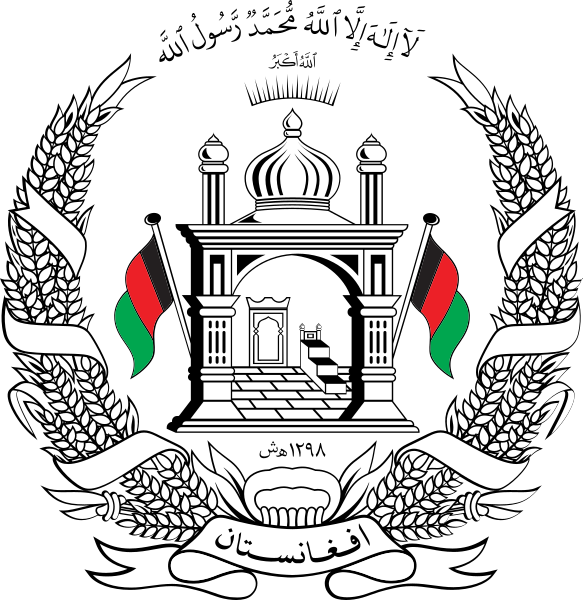
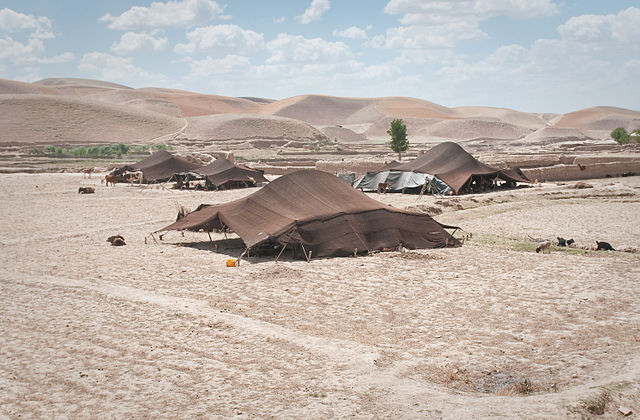
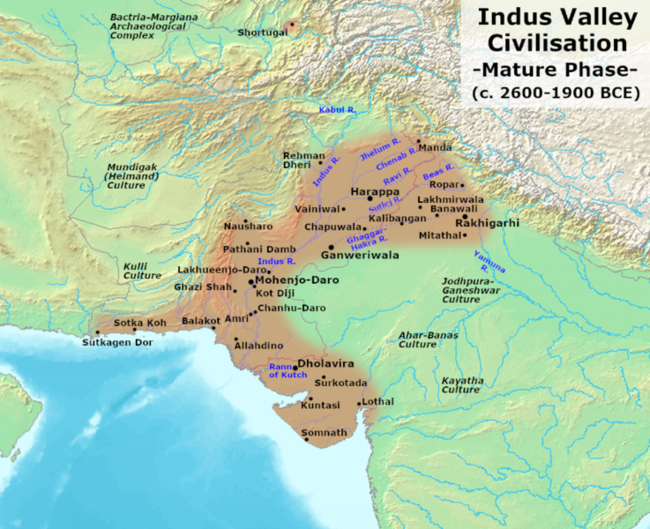

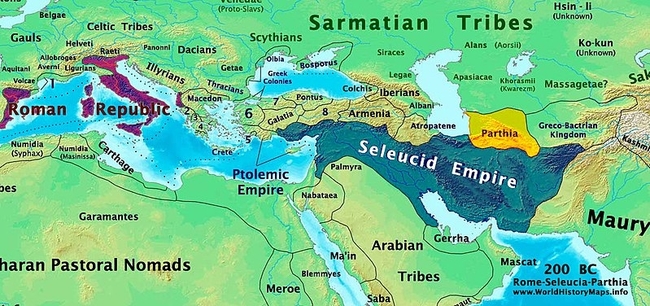
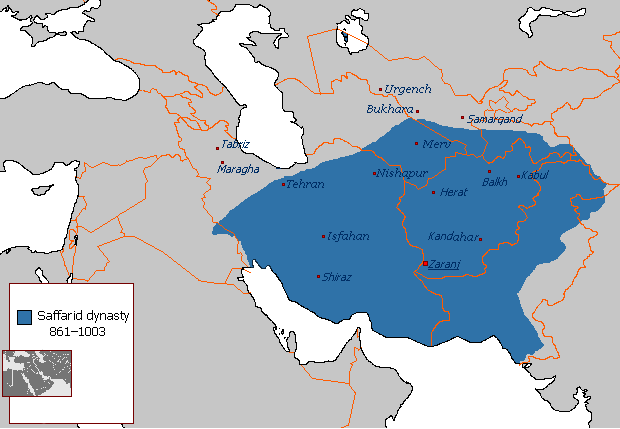
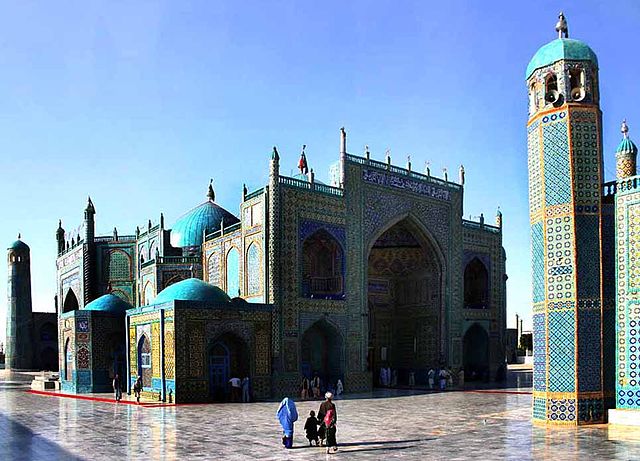

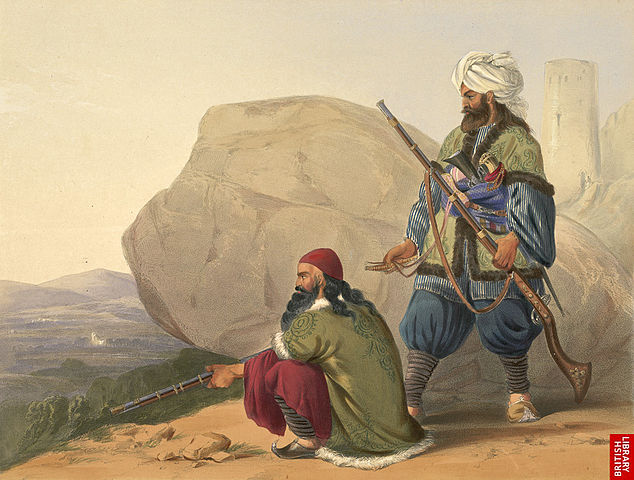
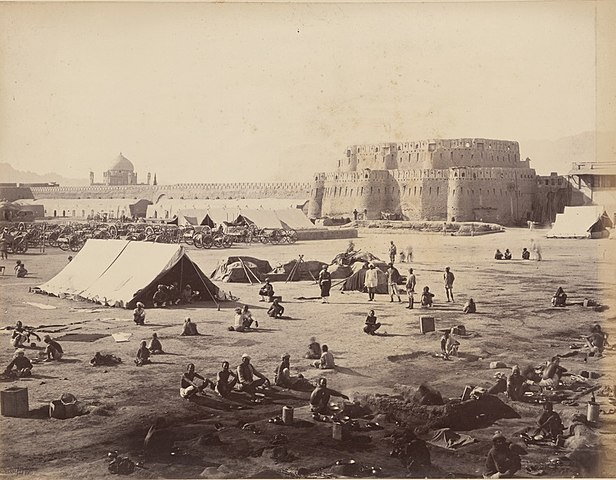
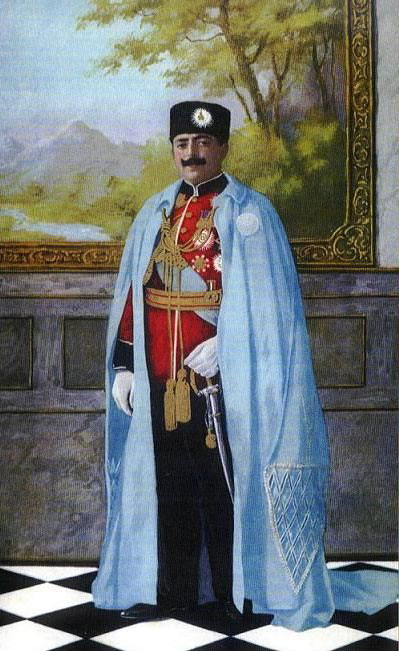
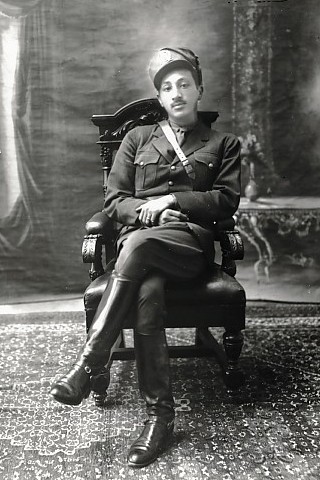
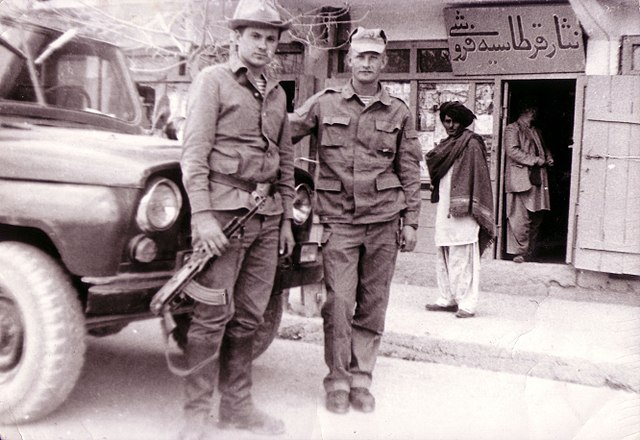
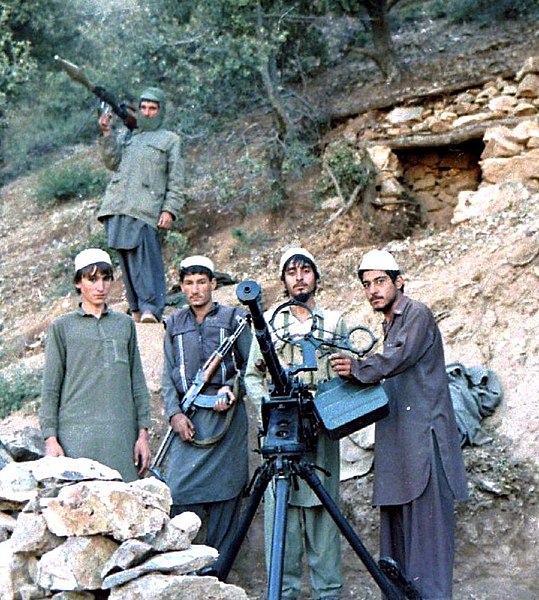
.png)
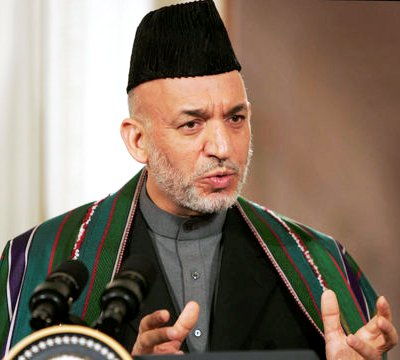
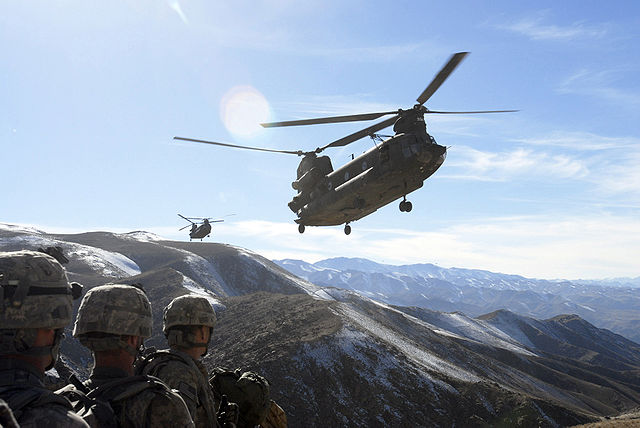
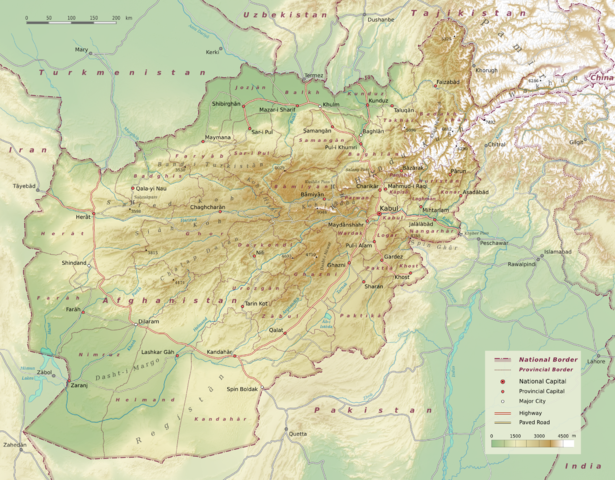
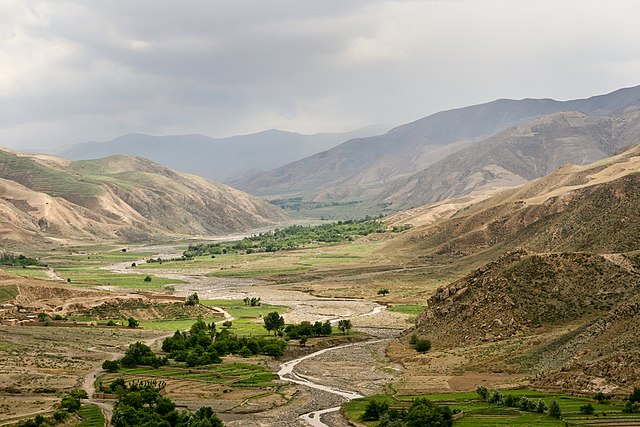
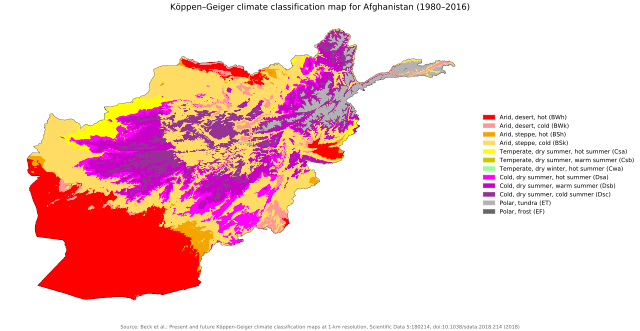
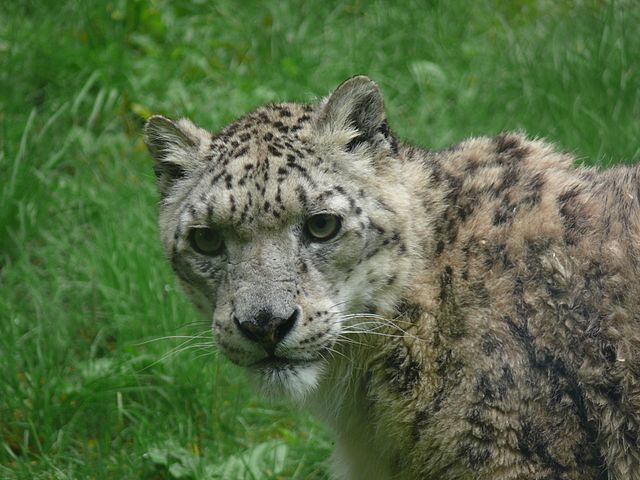
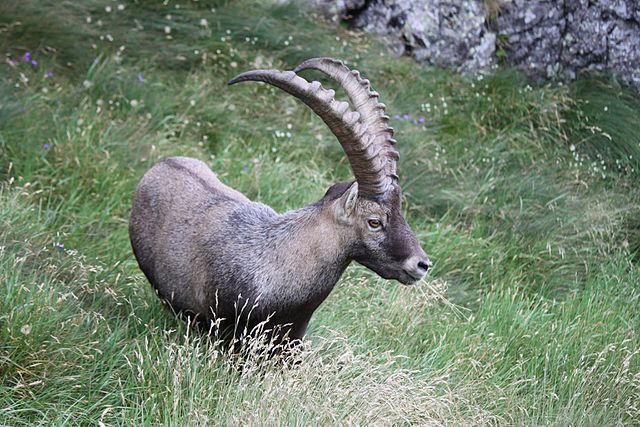
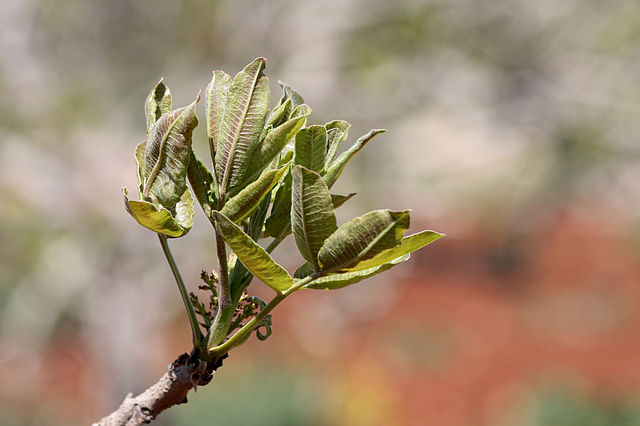
.jpg)
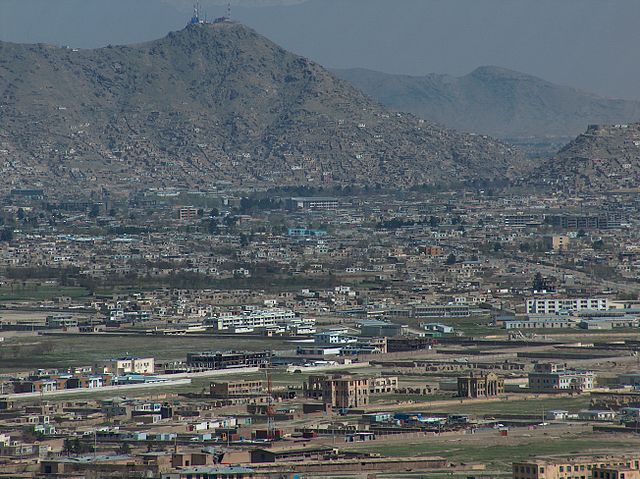
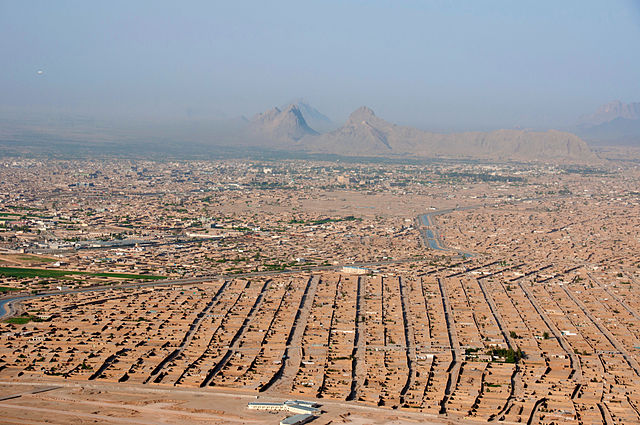

.jpg)
.jpg)
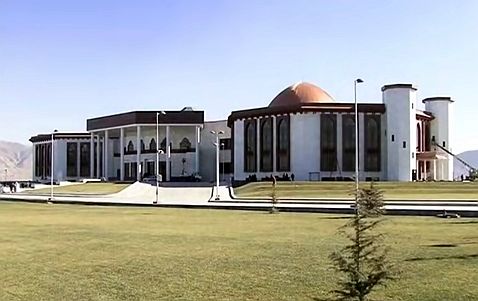
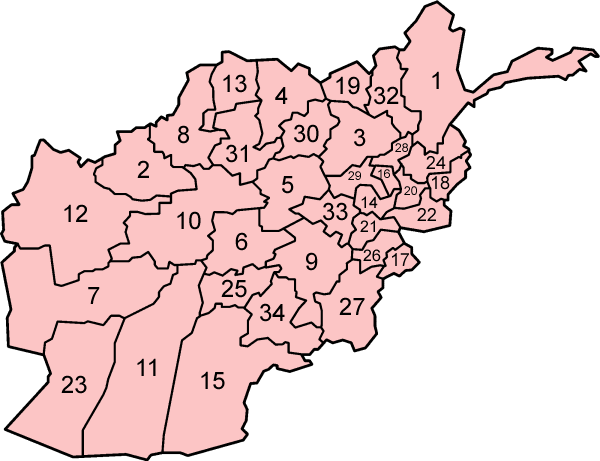
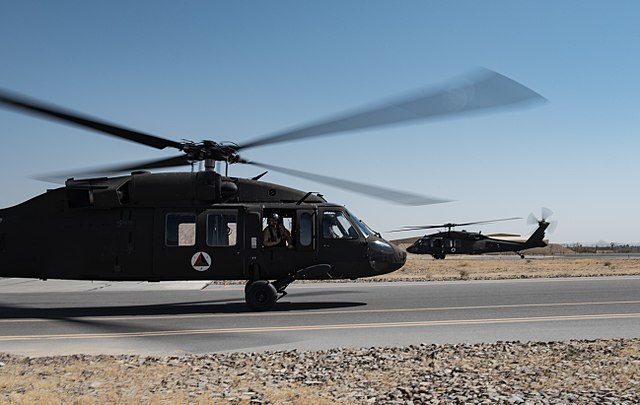

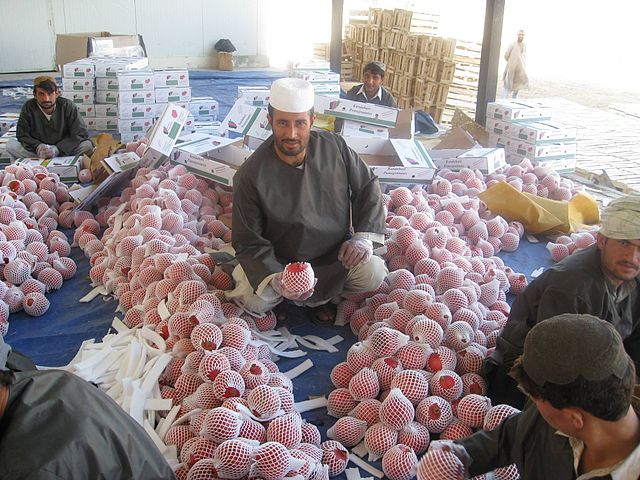
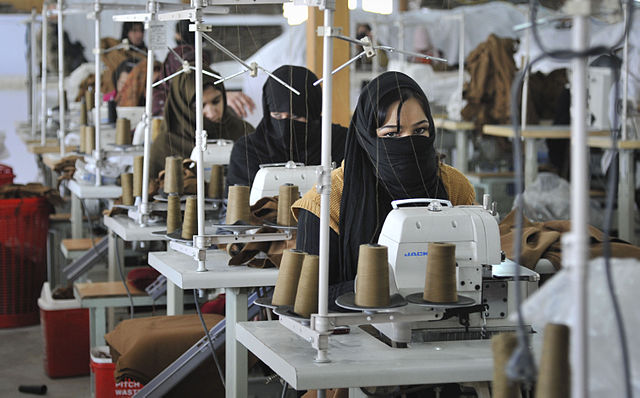
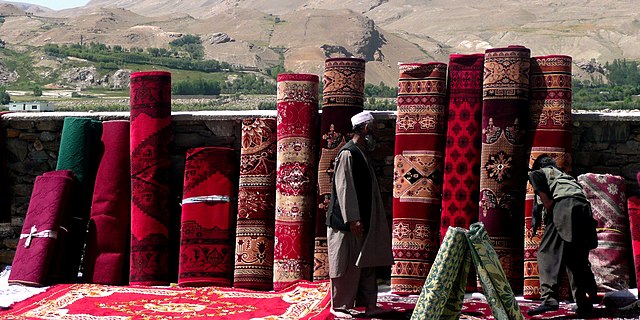
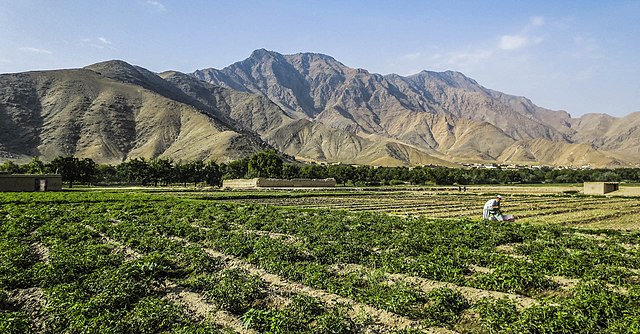
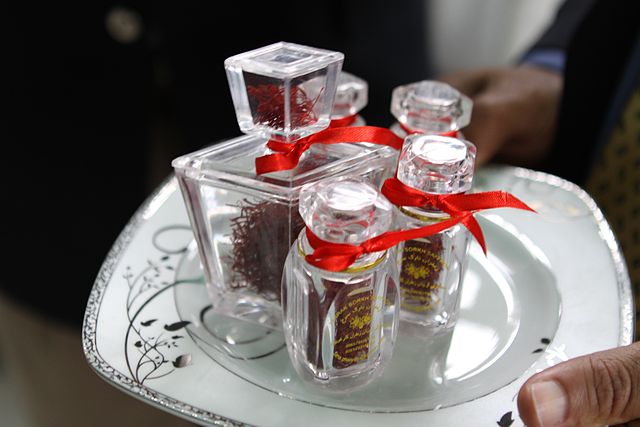
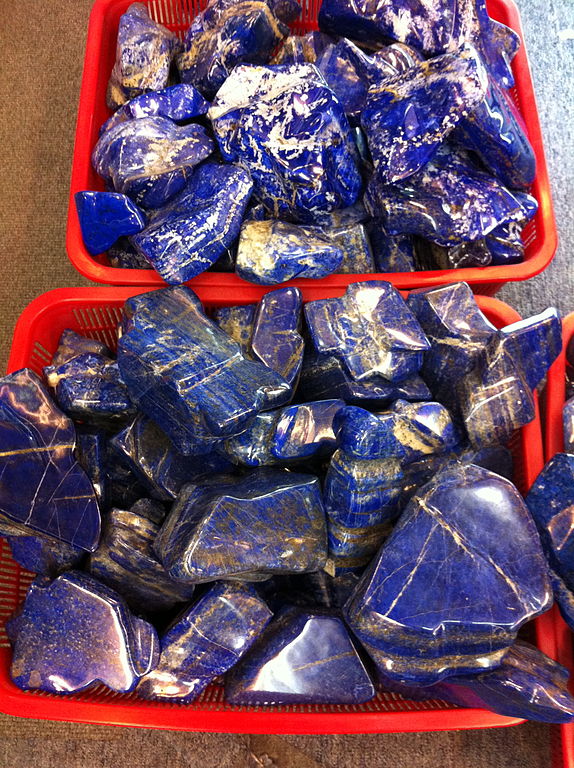
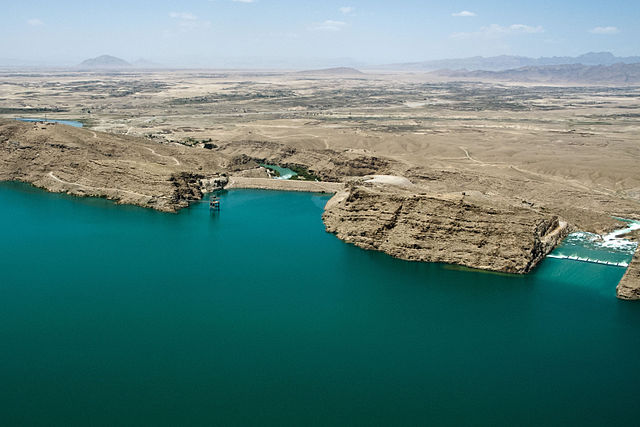
.jpg)
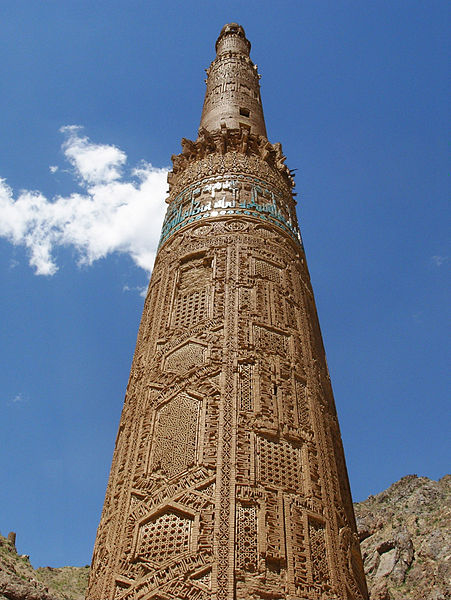
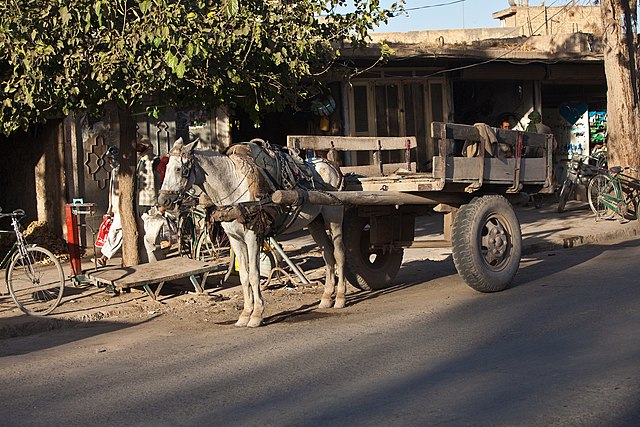
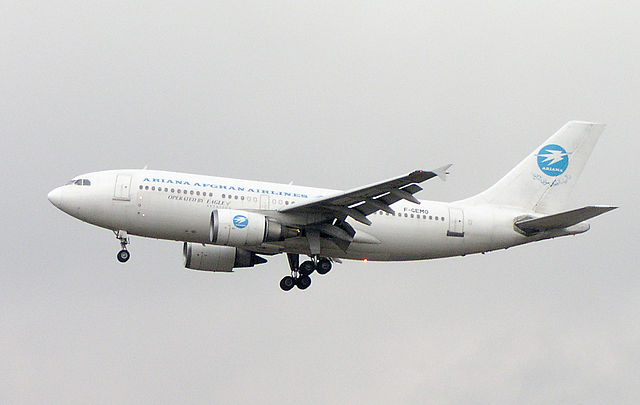
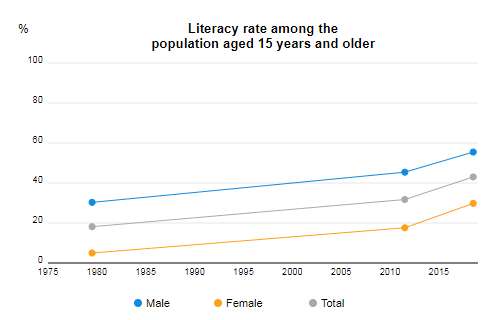
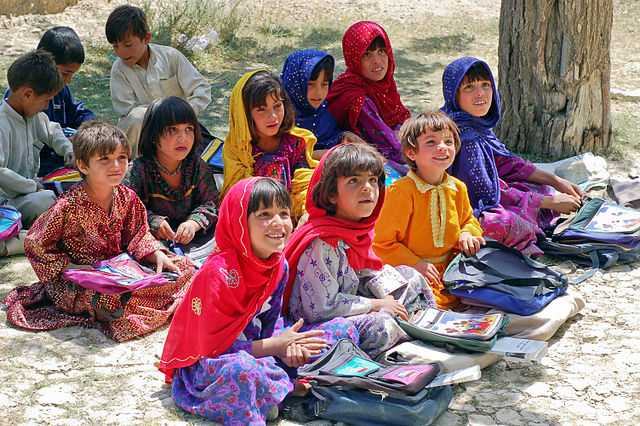
-_Menschen_-_Annemarie_Schwarzenbach_-_SLA-Schwarzenbach-A-5-21-110.jpg)
